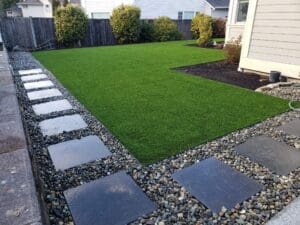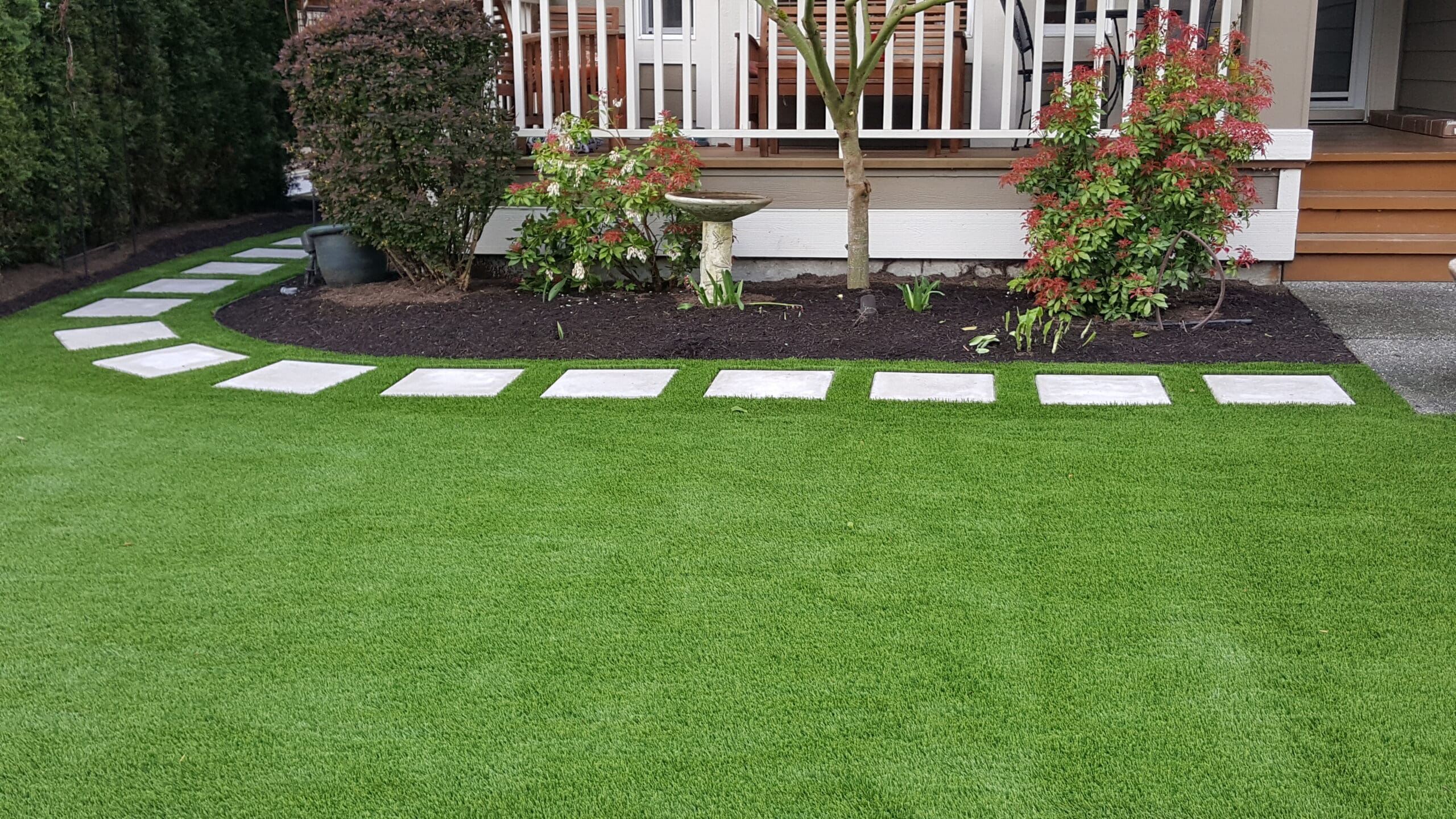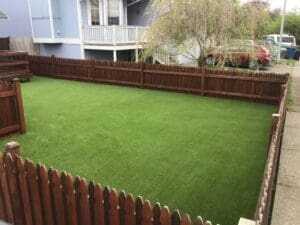Artificial grass, or synthetic turf, is an appealing option for homeowners seeking a lush, green lawn without the hassle of regular upkeep. Its low maintenance makes it especially popular in areas with common drought conditions or environmental concerns around water conservation. However, installing synthetic turf is an investment that requires consideration to ensure you get the best results for your yard and lifestyle. While the benefits are numerous, certain factors can affect the success of your installation, and addressing these early on can save you from costly mistakes down the line. Before installing synthetic turf in your yard, let’s take a deeper look at what to consider.
Yard Suitability: Ground Conditions and Drainage
Before you start picking out turf, you should assess the suitability of your yard. Just because synthetic grass can be laid in most places doesn’t mean that every space is automatically ready for installation.
Ground Leveling and Drainage:
One of the most important aspects of a successful turf installation is making sure that your yard has proper drainage. Even though synthetic grass requires no watering, it still needs to manage natural rainfall and prevent water from pooling on the surface, especially in places like the Pacific Northwest. Poor drainage can lead to soggy areas under the turf, with the possibility of mold. To address this, professionals will typically excavate the existing soil and lay down gravel or crushed stone under the turf. This base material helps water drain effectively, moving it away from the surface through the gravel into the soil below.
Proper excavation is critical in this step. Typically, 3-5 inches of soil are removed from the installation area, and any roots, rocks, or other obstructions must be cleared.
Adding a Weed Barrier:
Weeds are the bane of any garden or lawn, and while synthetic turf significantly reduces weed growth, it doesn’t eliminate the problem. For extra protection, a weed barrier should be installed between the compacted base and the turf. This barrier prevents persistent weeds from growing up through the surface. Choosing a high-quality barrier fabric that will last long without breaking down over time is essential. When dealing with your chosen turf company, make sure to ask about weed barriers if they are not mentioned to you.
Choosing the Right Synthetic Turf
Now that your yard is prepared, it’s time to choose the right synthetic turf product for your needs. There’s a wide variety of options on the market, and your choice will depend on several factors, including how you plan to use the space, the climate in your region, and your personal aesthetic preferences.
Pile Height and Density:
One of the first factors to consider is the pile height or the length of the synthetic grass blades. Shorter piles, typically around 1 to 1.2 inches, are better suited for areas with heavy foot traffic, such as pathways or spaces where children and pets play. These shorter blades are more resilient, standing up to wear and tear better than longer blades. On the other hand, if your goal is to create a more lush, decorative lawn, a taller pile height of 1.5 inches or more will give you that more luxurious appearance.
Density refers to how closely packed the turf fibers are, and it plays a role in the turf’s appearance and durability. Higher-density turfs have more fibers per square inch, making the lawn look fuller and more natural. However, they can also be more expensive. A higher-density turf will be more resistant to flattening in high-traffic areas.
Infill Options:
Infill is a big part of synthetic turf installations, supporting the blades and helping them remain upright. It also helps with cushioning and drainage. Standard infill options include silica sand, rubber granules, and organic materials like cork. Silica sand is the most affordable option and works well in most climates, but rubber infill offers more cushioning. It can be a better option for playgrounds or areas where people will run, like fields. Organic infills, while eco-friendly, may not be as durable in wetter climates, so it’s important to consider your local environment when choosing an infill type.
Professional Installation vs. DIY
Now that you’ve chosen your turf, the next question is whether to tackle the installation yourself or hire a professional. There are pros and cons to both options, and your decision will depend on factors like your budget, experience level, and the size and complexity of the job.
The Benefits of Professional Installation:
For most homeowners, professional installation is the best option. Turf installers have  specialized tools and experience to ensure a smooth, even, and properly done installation. They also know how to avoid common mistakes DIYers might encounter, such as improper base compaction or poorly aligned seams between turf rolls. Hiring a pro can also save you time, as the entire process—from excavation to finishing touches—can be completed much faster with an experienced team. Feel free to contact us with any further questions about working with an installation team at Synthetic Turf Northwest.
specialized tools and experience to ensure a smooth, even, and properly done installation. They also know how to avoid common mistakes DIYers might encounter, such as improper base compaction or poorly aligned seams between turf rolls. Hiring a pro can also save you time, as the entire process—from excavation to finishing touches—can be completed much faster with an experienced team. Feel free to contact us with any further questions about working with an installation team at Synthetic Turf Northwest.
DIY Installation Considerations:
If you’re a handy person with experience in landscaping or construction, a DIY installation might be a feasible option. Just remember that synthetic turf installation is a labor-intensive job that requires precision and time.
Maintenance Considerations
While synthetic turf is often advertised as “maintenance-free,” this isn’t entirely accurate. The maintenance requirements are much lower than natural grass, but there are still a few steps you’ll need to take to keep your lawn in top shape.
Regular Brushing and Cleaning:
To keep the blades standing upright and to prevent matting, especially in high-traffic areas, it’s essential to regularly brush the turf. To avoid staining and odors, you’ll also want to remove debris, like leaves, twigs, and pet waste. Most synthetic turf systems are designed with drainage holes, but allowing debris to accumulate can affect drainage over time.
Infill Maintenance:
Infill materials, mainly rubber or sand, can shift over time, especially with heavy rain or foot traffic. You may need to add more infill every few years to maintain proper cushioning and ensure the grass blades stay upright.
Installing synthetic turf can be a game-changer for your yard, offering a beautiful, low-maintenance alternative to natural grass. However, to ensure the best results, it’s important to evaluate your yard, prepare the base, and select the right turf for your needs.
Always feel free to contact us with any questions, get a quote for installation, or to purchase synthetic turf for any of your DIY needs!




